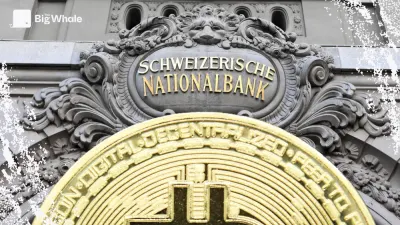TBW - Strategy: Michael Saylor's black scenario

Long hailed for its boldness and consistency, the strategy of Michael Saylor - boss and founder of MicroStrategy, now 'Strategy' - is now attracting growing doubts. In the space of just five months, between November 2024 and March 2025, the company more than doubled its holdings of Bitcoin, from 252,220 to 528,185 BTC. These massive acquisitions, at an estimated total cost of $35.6 billion, were made at an average price of $67,458 each. This timing is striking, given that the Bitcoin market was already showing signs of running out of steam in the first quarter of 2024. For the first time since the start of his bet in 2020, Saylor's strategy appears to be exposed to systemic risk.
For the past two years, Strategy says it no longer uses loans backed by its Bitcoin stock. Now, its acquisitions are financed exclusively by issuing shares on the stock market - class A ordinary shares - or by creating convertible bonds. This choice avoids the margin calls that threatened the company during the downturns of 2022. But it is no less risky.
The convertible bonds issued by Strategy must in principle be redeemed five years after issue, either in cash or in MSTR shares, depending on the choice of the creditors. The whole mechanism is based on a simple assumption: that Bitcoin continues its upward cycles every four years, dragging the MSTR share price in its wake. If this is the case, creditors will opt to convert to shares, limiting cash outflows. But if this cycle were to be broken, and Bitcoin were to enter a long bear phase, creditors might prefer to repay in cash, putting Strategy under brutal liquidity pressure.
This possibility takes on added significance as the company faces a particularly heavy schedule of maturities from 15 September 2028. For five consecutive years, until 2033, Strategy will have to repay around 1.6 billion dollars a year, for a total of 8 billion. At the current price of $280 per MSTR share, only the bonds maturing in 2029 and 2030 are potentially underwater, as their conversion price is higher than the value of the stock at the end of the first quarter of 2025. For all the others, holders would be encouraged to convert their debt into shares, which would further dilute existing shareholders. But if MSTR's share price were to fall sharply - due to a prolonged decline in Bitcoin or too frequent and dilutive issuances - this scenario would collapse.
Strategy could then be forced to launch new issuances to honour previous ones, at the risk of completely eroding market confidence (this would mean the company taking on debt to honour its debts). And if this option itself became ineffective, the company would have no choice but to sell off part of its BTC stock. This move, coming from one of the world's largest holders of Bitcoin, could set off a downward spiral: massive selling, a fall in the BTC price, a fall in MSTR's share price, new repayment pressures, new sales, and so on.
>> Bitcoin Treasury Companies : An overview of the financial levers available to them
Michael Saylor alone at the helm, but until when?
Beyond the financial considerations, Strategy faces another challenge: that of governance. To finance its acquisitions, the company has increased the number of times it has raised funds by issuing ordinary shares, leading to a gradual dilution of its capital. A classic process in corporate finance, but one that can prove destabilising when the strategy is based on a shared long-term vision.
In listed companies, the smaller the share of capital held by the founders, the more their decision-making power erodes. And as the number of shareholders increases, so does the risk of divergent views emerging, particularly in times of crisis. Strategy is not a company like any other: it is a Bitcoin Treasury Company, in other words an entity whose business model is based on the accumulation of a speculative asset over the very long term. It can only function if it has investors around it who are convinced of the relevance of this thesis.
To maintain this alignment, Michael Saylor has endeavoured to gradually bring new shareholders into the capital who are committed to his vision, while locking in his position at the top of the organisational chart.
>> Alexandre Laizet (The Blockchain Group): "We are in a way the European MicroStrategy"
The system put in place is particularly robust. Strategy distinguishes between class A shares, which are ordinary and listed, and class B shares, which are unlisted and carry ten times as many voting rights. Today, 99.9% of the class B shares are held by Michael Saylor. This mechanism allows him to retain, despite the dilution, almost absolute power over the company's strategy.
According to the DEF-14A form filed with the SEC on 3 January 2025, Saylor still holds 46.8% of Strategy's voting rights, even though his economic share in the capital is now a minority. As long as this lock-up holds, he is free to pursue his bet on Bitcoin without hindrance. But this power, however solid on paper, rests on an increasingly strained funding structure.
In the absence of significant operating revenues, everything hinges on market confidence, maintaining the share price, and the belief that Bitcoin will continue its upward trajectory.
With more than 528,000 BTC on its balance sheet, Strategy has become the archetypal crypto-aligned company. But this vanguard role, which has earned it the admiration of part of the ecosystem, could turn into an Achilles heel if the market fails to keep up. Michael Saylor's strategy has never been one of diversification; it is an absolute leap of faith. The slightest hitch in that faith - from investors, creditors or the markets - could precipitate a chain reaction. More than a technological or financial gamble, Strategy now embodies a life-size test of Bitcoin's resilience... and that of its supporters.
>> Join our 10 April event on Bitcoin Treasury Companies



